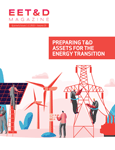Whether it's an unusually but predictably cold Texas winter freezing natural gas supplies, or a band of hackers shutting down a major oil pipeline and demanding millions in ransom, recent energy crises have confirmed again the vulnerability of the United States power grid. Federal officials have long known of the threats facing the nation's outmoded hub-and-spoke system. Yet, despite mounting blackouts and brownouts across the country as aging infrastructure fails to keep pace with growing demand, there has been little innovation to shore up our energy supply. Revolutionary technology and tools can help diversify and protect American power. We must marshal the resources, bolstered by the will of the public and private sectors to boost our energy resiliency and transform how this country runs.
Thinking small
Emerging energy resiliency resources such as microgrids have the potential to reshape how energy is generated, stored and distributed across the United States. Microgrids are small, local self-sufficient power networks, found in a broad variety of locations, such as on military installations and college campuses, that can continue operating in the event of a large-scale power failure. There are about 160 across the U.S. that generate just 0.2% of American power.
Microgrid power is derived from diverse, distributed generation, rather than a single, centralized source. This diversification can better withstand the catastrophic weather events, voltage fluctuations, and equipment failures that can take down a massive power grid anywhere along thousands of miles of transmission lines or hundreds of thousands of miles of distribution lines. The demand for off-grid power sources is steadily increasing, with the number of microgrids expected to grow by more than 27% to $33 billion by 2027, according to industry projections.
A sustainable security solution
Microgrids have long been an important element of the nation’s energy security. The U.S. military has roughly 50 microgrids in place or in development to maintain mission-critical power, in addition to creative public-private partnerships designed to increase energy resilience by tapping the sizable stored energy reserves at military installations. The more microgrids that can keep power flowing in the event of a terrorist attack or other threat to the main power grid, the better equipped the military will be to continue operations and defend national security.
Microgrids also offer a sustainable energy solution in the midst of the grave dangers posed by climate change. Smaller, localized grids operate more efficiently and less vulnerably than long-distance, high voltage power lines and can drive down power costs. Traditional lines that stretch thousands of miles shed voltage during the transmission journey, losing as much as 5% of power over distance. In addition, a small, distributed grid can utilize renewable energy sources such as wind and solar coupled with energy storage, reducing carbon emissions.
Powering pandemic preparedness
Over the past year and a half, the COVID-19 pandemic has demonstrated how absolutely essential hospital facilities are to public health, particularly on the front lines of a deadly pandemic. As part of a newly urgent push for pandemic preparedness, hospitals are recognizing energy resiliency as a critical component of patient safety. More and more health systems are deploying microgrids at health facilities as they are more cost-effective, quieter, and pollute less than traditional backup diesel generators. Powering hospitals through microgrids ensures continuity of care even in emergency conditions. With independent energy sources, hospitals can remain a safe haven in storms of every kind.
Supercharging the EV revolution
Microgrids also offer enormous potential to help accelerate the widespread adoption of electric vehicles by motorists, already underway in many parts of the world. Millions of new electrically powered cars and trucks will exponentially increase the burden on the main power grid: experts say U.S. power generation will need to double by 2050. The Biden Administration is committed to promoting clean technology, including electric vehicles, to reduce the harmful greenhouse gas emissions that contribute to disastrous climate consequences. There are plans to build 500,000 new electric vehicle charging stations—microgrids will be key to boosting U.S. energy resiliency by handling the accompanying demand for power.
Incentivizing microgrids
This growing demand has catalyzed promising new partnerships between utilities and universities to research and develop microgrids. Federal and state governments are starting to recognize the power of these small, flexible, reliable energy solutions. U.S. Representative Jimmy Panetta has introduced legislation to provide tax credits for microgrids, especially urgent to his California constituents, who experience regular power outages due to wildfires and other natural disasters. In addition, The U.S. Department of Energy is funding federal microgrid projects.
Many long-standing state utility regulations intended for a traditional, centralized power grid can complicate or derail microgrid development efforts. California, Hawaii, Texas, and Washington state are at the forefront of forward-thinking microgrid regulations, reviewing standards, revising regulations, creating new metrics, and establishing tariffs that allow microgrids to be used in emergencies. Progressive microgrid policy there can be used as a model for other states. But there is still much to be done.
Modeling microgrid success
Isolated communities have established effective microgrids to lessen their reliance on importing expensive fossil fuels. Cordova, Alaska established a microgrid system that includes two renewable hydroelectric projects that provide 78% of local power. And the U.S. Army recently showcased a mobile, vehicle-based microgrid prototype that can be used on the battlefield, provide humanitarian aid, or respond to natural disasters.
Visionary energy solutions such as these offer a path for America to lessen its dependency on fossil fuels and its precarious reliance on an aging, fragile power network. Microgrids are a nimble, local, sustainable way forward into a brighter, more energy resilient future.

Desmond Wheatley is the president and Chief Executive Officer of Beam Global, a clean technology company providing renewable charging infrastructure solutions for electric vehicles, energy security and disaster preparedness.







